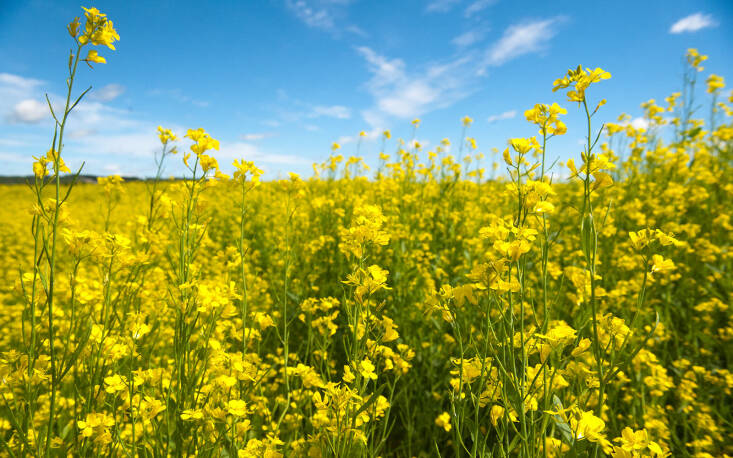Why would you plant a crop you don’t get to eat and that you’ll either let rot in the bed or till into the soil while it’s still green? Seems like a waste of time, energy, seed, water…but it’s not. It’s far from that.
Cover crops have been around since at least the Romans, possibly longer, and were part of farm life until the 1950s, when synthetic fertilizers and herbicides came into wide use. They are now making a comeback due to the growing interest in sustainable agriculture. But you don’t need to be a farmer with acres and acres of land to leverage cover crops.
What is a cover crop?

A cover crop is a crop you sow for the sole benefit of improving the soil. A cover crop can be a grass, a legume, or a brassica vegetable. Or it can be a combination of any of those three types depending on what your soil needs. Cover crops are planted outside of the active growing season. So if the area you are in has a growing season of May through October, then you would sow your cover crop in November and “harvest” it in March or April to give them time to decompose.
Why plant a cover crop?

As we learn more and more about how interconnected the food web is and how important soil structure is to support healthy plants, it’s become clear that synthetic fertilizers and herbicides, while initially boosting yields, have put the ecosystem out of balance and at risk. The movement towards sustainability has reintroduced support for cover crops, which have many benefits, including:
1. They can fix nitrogen into the soil. This decreases the need for synthetic fertilizers. The legume cover crops—alfalfa, vetch, clovers, and peas—all fix nitrogen into the soil. Sometimes they need a bit of help if your soil is poor by adding a special type of fungus, called an inoculant, into the seed mix when sown.
2. They can help retain moisture. Grass cover crops, such as winter wheat, barley, and rye, add organic matter to the soil, locking in moisture and cutting down on watering needs—and doing away with the need for mulch.
3. They can act as compost. Another name for cover crops is green manure. When you till the crop into the soil and it decomposes, it releases nutrients back into the soil. More organic matter means more earthworms and other healthy soil organisms.

4. They can cut down on weeds and harmful pests. When planted densely, the crop crowds out the weeds. You’ll just have to “harvest” them before they go to seed and become weeds themselves! This means either till them into the soil or cut them down while still flowering.
5. They can stop soil erosion. Soil can’t be blown or washed away if plants are holding it in place.
6. They improve soil structure. The roots of brassicas, such as turnips, break up compacted soil, allowing air and water to seep in. Their decay puts organic matter and nutrients back into the soil, further improving the quality.
How do you use a cover crop in a home garden?

You don’t have acres of land. If you have, say, a 4 x 12 foot bed (a total of 48 square feet), can you and should you plant a cover crop? Sure! Cover crops are planted in late summer or early fall. As to which cover crop to plant, that will depend on why you need it. If you have heavy feeders or don’t rotate the types of plants year to year, you may look into legumes and grasses to rebuild your soil structure and fertility. If you live somewhere where droughts are common, then a mix of grasses can add organic matter to hold in moisture. The best place to find out more is your state’s cooperative extension office or your local master gardener program for your county. They will be the most familiar with your specific soil type and help you pick the right cover crop for the plants you want to grow.
You don’t need to be a farmer to use the age-old practice of cover crops. By planting the right cover crop during the “off” season, you are using less synthetic fertilizers, crowding out weeds, improving the soil structure, reducing your need for water, and creating a healthy soil ecosystem in your own backyard.
See also:
- Ask the Expert: Winter Garden Tips from Stone Barns Center
- Dirty Secrets: 9 Ways to Improve Garden Soil
- The Garden Decoder: What Is Green Mulch?









Have a Question or Comment About This Post?
Join the conversation